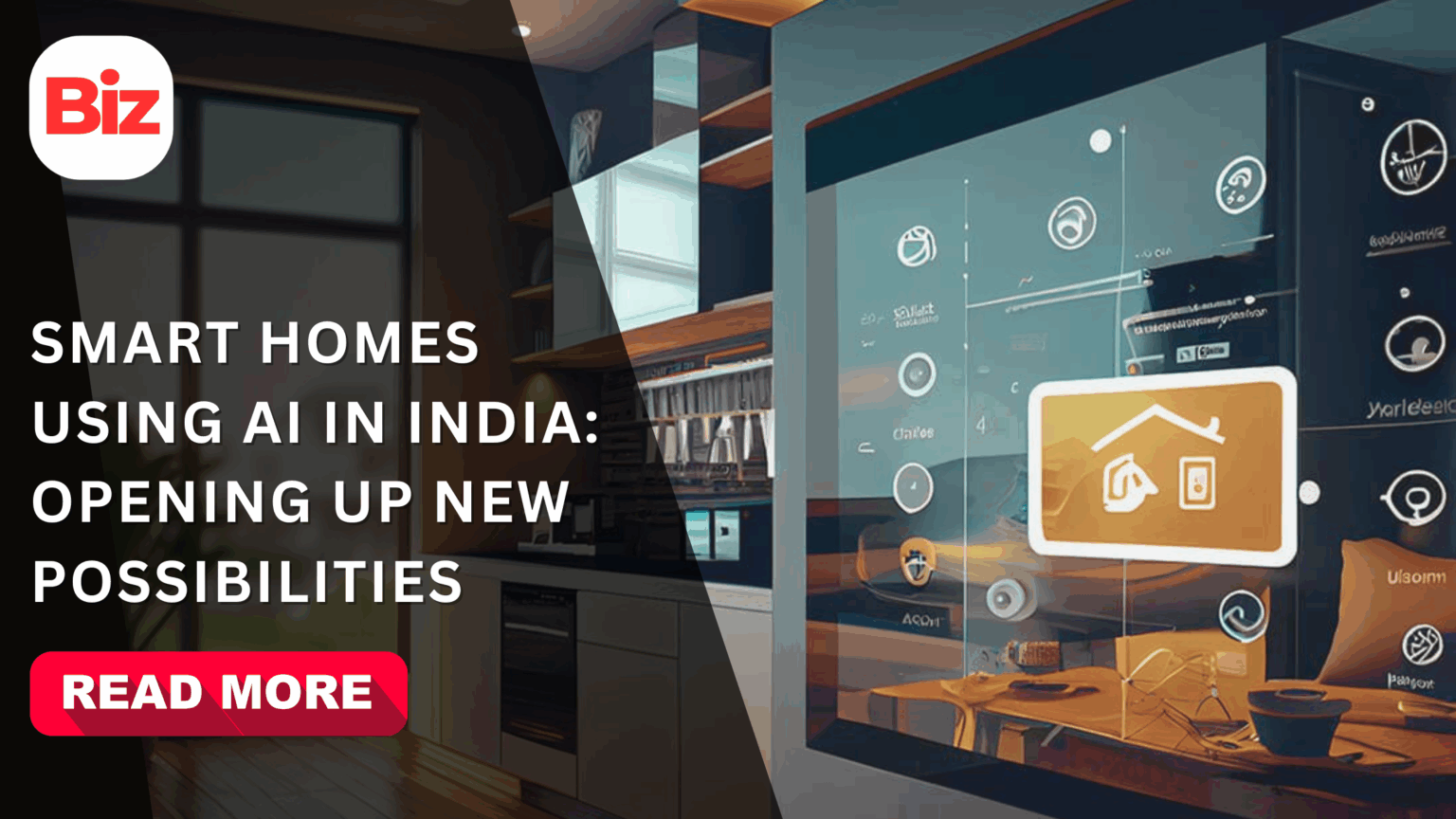Imagine you arrive home tired after a long day. The lights dim automatically, the thermostat adjusts to your preferred setting, the soft hum of your air purifier kicks in and your favourite music greets you in the background. No switches to flick. No apps to open. That scene used to be sci-fi. But it’s becoming everyday life.

In fact, smart homes using AI in India opening up new possibilities is not just a headline, it’s a lifestyle shift already underway.
Because the challenge has never just been “can we do it?” but “can we make it reliable, affordable, and trusted?” Today, those barriers are falling.
What is Driving Smart Homes in India
Several forces are pushing this transformation:
- Increased technological consciousness: There are more individuals with access to smartphone devices, those with quicker internet access and at ease with computerized aids.
- Energy issues and expenditures: As the cost of electricity increases and climate variability intensifies, AI-based systems that can be optimized to save power become of interest.
- City life and lack of space Urban areas are growing, with more people living in apartments; smart integration, such as small-sized devices and multifunction structures, are now necessary.
- Government push and standards: Standards such as the Smart Cities Mission in India, new rules on the IoT, and energy efficiency standards are pushing adoption.
Thanks to all this, smart home adoption isn’t just for luxury buyers. Entry-level systems: smart plugs, lights, and voice assistants are already mainstream. The leap now is toward full-home integration.
What Smart Homes Using AI in India Look Like Today
Across Indian cities, developers are showcasing model apartments equipped with next-gen automation. In Bengaluru, for example, housing projects feature doors with facial recognition locks, air conditioners that adjust based on time and occupancy, and lighting systems that switch off in unused rooms. These setups demonstrate how AI can make daily living more efficient, without the resident lifting a finger.
Here are features popping up in many Indian homes now:
- Voice-activated assistants that respond in English, Hindi, and regional languages.
- Smart home switches that can schedule or remote-control lights, fans, even water heaters.
- AI security systems with motion sensors and phone alerts.
- Climate control: ACs and fans that learn your usage patterns to save energy.
- Learning appliances: From washing machines that suggest cycles to refrigerators that track freshness.
These additions make life easier. But the truth is, integrating them seamlessly is still work in progress.
The Big Upgrades & What’s Coming
India’s smart homes are moving beyond gadgets. With AI at the center, homes are becoming proactive, not just reactive. New breakthroughs include:
Predictive maintenance: Devices send alerts before they break down.
Health tracking: Air quality monitors warn about allergens or pollutants.
Energy grid integration: Homes balance loads, use solar, or shift usage to off-peak hours.
Personalized environments: Rooms adapt lighting, temperature, or music based on who walks in.
And prices are dropping fast. Devices once priced for luxury buyers are now reaching the middle class thanks to Indian manufacturing and growing demand.
What Holds Us Back
Despite the accelerating speed of progress, there are still certain setbacks:
- Interoperability: Not all brands can speak to one another.
- Privacy issues: Cloud-based AI has brought questions on the issue of the location of data.
- Power interruptions and network instability can cause smart homes to become dysfunctional.
But Indian innovators are responding. Edge computing reduces dependence on the cloud. Local data storage improves privacy. And new standards like Matter aim to make all devices compatible.
The Real Impact of AI-Powered Smart Homes
Why should anyone care about smart homes? Because the impact goes beyond convenience:
- Quality of life improves, especially for elderly people or those with mobility challenges.
- Savings add up, thanks to lower power bills and efficient appliance use.
- Environmental benefits come from reduced carbon emissions.
- Innovation & jobs expand in sectors from AI software to interior design.
India, with its tech-savvy population and appetite for innovation, is uniquely positioned to lead.
Real-World Examples
Boutique hotels in Mumbai already use AI to change room ambience based on guest preferences.
Apartments in Delhi NCR are installing smart doorbells with facial recognition linked to security services.
Startups in Pune are designing sofas that monitor posture and adjust lumbar support overnight, early glimpses of smart home furniture that marries wellness with design.
These pilots show how India’s smart home market is moving from luxury showcase to everyday practicality.
How to Get Started
You can start changing your place of residence by starting with these:
Choose one of the devices– experiment with a smart speaker or a smart switch and you will see what works.
Select open standards – find equipment with Zigbee, Matter, or Bluetooth mesh.
Secure your network- update firmware, use a strong password and create a guest Wi-Fi internet of things.
Expansion plan – consider the way the current set-up will expand tomorrow.
Check on local reviews– the equipment should be able to cope with the power outages, dust and climate in India.
Official Support & Global Context
According to the Smart Cities Mission, IoT and AI-based infrastructure is part of India’s urban development plan. The Bureau of Energy Efficiency is also rolling out standards that guide consumers toward energy-efficient and AI-enabled devices.
International organizations, such as the International Energy Agency (IEA), stress that the smart home technologies are significant in energy demand reduction and contributing to sustainable development. India is not only keeping in touch with such international best practices, but also adapting them to local realities.
FAQs
What is the future of AI in smart homes?
The future is in personalization and autonomy. Homes will predict demands- turn on lights and regulate temperature and schedules without the user having to intervene.
Which AI is best for a smart home?
It depends on your needs. Many are being served by voice assistants such as Alexa or Google. However, users with privacy concerns might want hubs that have an AI processor, which does not transmit data to the cloud.
What is the future of home automation in India?
It will be cheaper and more trustworthy. The step by step system will enable people to upgrade with time and stricter laws will provide security and trust.
How do smart home devices use AI?
They teach themselves habits, identify faces and voices, anticipate crashes and strive to be efficient. In simple terms, AI helps devices not just “work” but “think.”
Conclusion
Smart homes using AI in India opening up new possibilities is no longer a distant dream. From smarter switches to intelligent furniture, from predictive maintenance to better security, homes are becoming extensions of our lifestyles: intuitive, efficient, and sustainable.
For millions of Indians, the question is no longer if they’ll live in a smart home. It’s when.
YOU MAY ALSO READ: DREAME VACUUM








